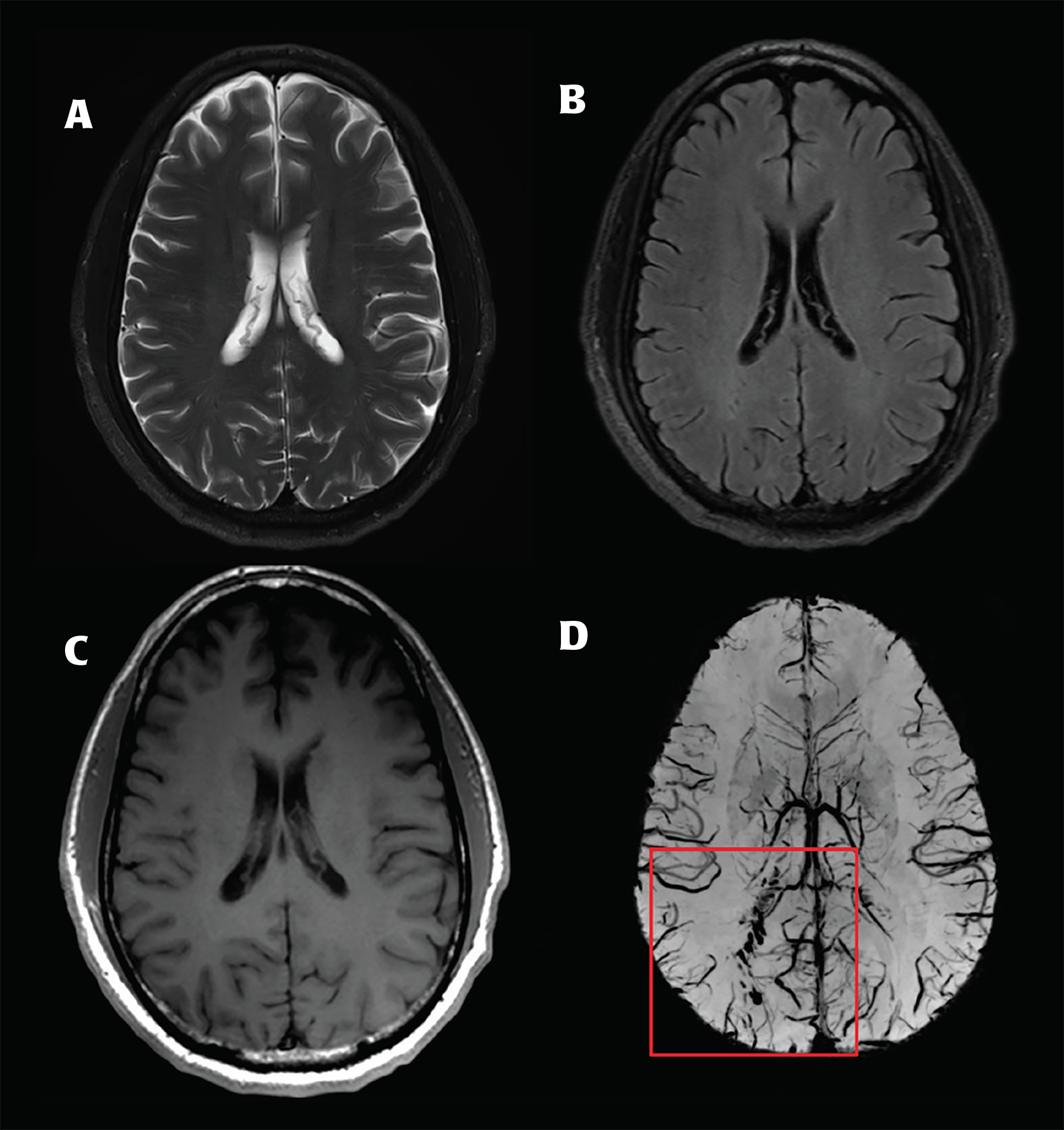MR Brain: Enhanced Flow-Sensitive Black Blood
Images


Brought to you by Toshiba.
History
This is a 60-year-old man with continued headaches three months after sustaining a concussion.
Imaging Findings
The brain appears essentially normal on the conventional sequences (A, B, C). However, the enhanced Flow-Sensitive Black Blood (eFSBB) sequence clearly shows small foci of susceptibility hypointensity reflecting hemosiderin deposition within the right parietal white matter (D). These hemosiderin deposits seen on the eFSBB raise the possibility of traumatic axonal injury.
Discussion
The enhanced Flow-Sensitive Black Blood (FSBB) technique utilizes motion probing gradients (MPGs) in a 3D Field Echo (FE) sequence to generate image contrast from both T2* susceptibility effects as well as intra-voxel incoherent motion dephasing effects. In other words, FSBB sequence builds upon the typical susceptibility contrast in T2*-weighted FE sequences by adding MPGs to generate additional signal dephasing in slow flowing vessels, enhancing depiction of the vessels. The sequence further enhances vessel depiction by applying a COSine algorithm1 during post processing to enhance the contrast between blood vessels or microhemorrhages and background tissue.
Conclusion
In this case, the eFSBB technique allowed for detection of subtle traumatic axonal injury in this patient with continuing, unexplained symptoms after concussion. The finding was not visible on other conventional sequences. While there is no cure for axonal injury, this diagnosis allowed the managing neurologist to discontinue other lines of investigation into the etiology of the headache and confidently counsel and reassure the patient.
References
- Kimura et al. Phase Enhancement for Time-of-Flight and Flow-Sensitive Black Blood MR Angiography. Magn. Reson. Med. 66:437-447 (2011).
Citation
MR Brain: Enhanced Flow-Sensitive Black Blood. Appl Radiol.
May 24, 2017